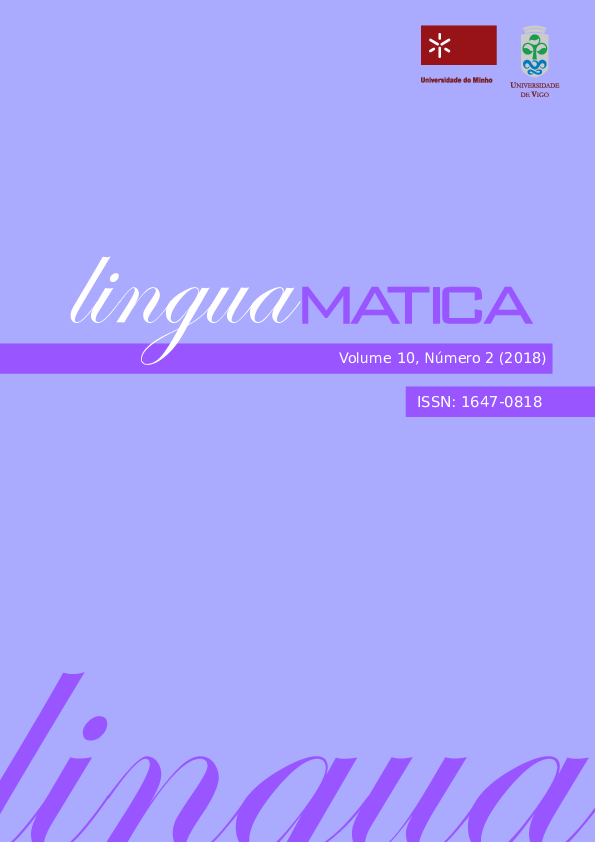Converse constructions in Brazilian Portuguese
preliminary description and classification
Abstract
Approaches to constructions with the support verbs dar (to give), ter (to have) and fazer (to make) in Brazilian Portuguese indicate that most of the predicative nouns combined with these verbs accept the transformation called Conversion. Conversion is a formal operation that establishes a non-oriented relation of syntactic and semantic (paraphrastic) equivalence between two elementary sentences, such as Ana dá um beijo em Rui/ Rui recebe um beijo de Ana (Rui gives Ana a kiss/ Ana gets a kiss from Rui). In this relation the predicative noun is maintained and the argument position is changed without affecting their semantic roles. In these constructions, the active sentence and the active support verb are considered standard; while the equivalent passive sentence is considered a converse construction. This work presents the first steps of a description of these constructions in Brazilian Portuguese. The study is based on Lexicon-Grammar binary matrices, in which the columns represent the syntactic-semantic properties of each construction. This study results may contribute to the analysis of texts, identifying the information and form of the structure, and consequently, improving the description of Brazilian Portuguese. Also, the representation of the results in binary matrices provides a formal description that can be used in applications in Natural Language Processing.
Copyright (c) 2019 Nathália Perussi Calcia, Oto Araujo Vale

This work is licensed under a Creative Commons Attribution 4.0 International License.
Authors who publish with this journal agree to the following terms:
- Authors retain copyright and grant the journal right of first publication with the work simultaneously licensed under a Creative Commons Attribution License that allows others to share the work with an acknowledgement of the work's authorship and initial publication in this journal.
- Authors are able to enter into separate, additional contractual arrangements for the non-exclusive distribution of the journal's published version of the work (e.g., post it to an institutional repository or publish it in a book), with an acknowledgement of its initial publication in this journal.
- Authors are permitted and encouraged to post their work online (e.g., in institutional repositories or on their website) prior to and during the submission process, as it can lead to productive exchanges, as well as earlier and greater citation of published work (See The Effect of Open Access).













